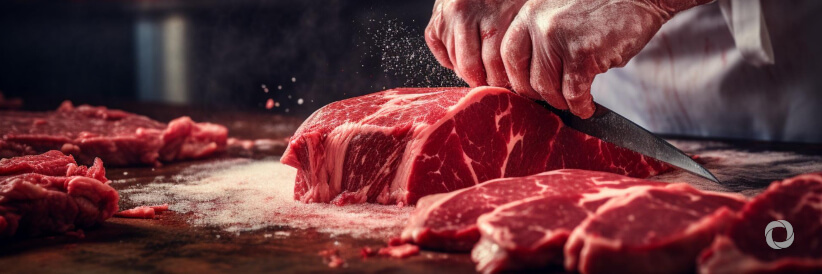A strategic dialogue about the future of European agriculture is currently taking place in order to design the next generation of donor programmes for farmers in the EU Member States.
Development programmes can consider scenario visioning to help everyone in a dialogue consider big strategic influences that may already be “in the post”. For instance, a long-term vision for the future of agri-fish in Europe and elsewhere might show a radically leaner meat sector than currently exists.
Indeed, a very different food sector 100 years from now might not involve any livestock nor fisheries in Europe. In 200 years no livestock might exist on earth other than in zoos or as pets. Sealife would have found its own new equilibrium.
In this development scenario: technological advances mean that society no longer needs livestock farmers nor livestock-feed crops nor fisheries nor all those that depend on these. Labs now provide society with all the protein they need in this vision. Only non-meat farms survived the market-led transition to non-slaughtered meat. The market drove the technology and the market changed its food supplies forever.
Imagine if in 200 years’ time, the history books had started to refer to human’s carnivorous period in the same way that society views the savage history of slavery and capital punishment. In 100 years the scenario sees every EU and world citizen being a very different generation of thinkers than the current generation.
In this scenario, it’s history books may see the current generation as many people who bury their heads in the sand i.e. the people who tried to control market forces but then discovered market forces were much much bigger than them.
The first main push in the 100 years-time scenario from the market came because of personal health and political commitment to keeping the climate as stable as possible. Society’s management of its BMI expenses and emissions led EU politicians to stop all public funding for red meat livestock farms over a period of five decades in the scenario. Red meat started to be compared to tobacco i.e. it was something lots of people still consumed, but everyone knew it wasn’t healthy in relative terms and so no public funding was provided for it.
In parallel with the scenario, today’s children’s kids and their offsprings evolved their society past the tipping point whereby supply and demand for lab meats joined forces causing the market to abandon livestock farms and fisheries wholesale rapidly. They were no longer needed and this new society did not want to slaughter when it was not necessary. Also because lab meats became so good that they became considered by this new society of the future to taste and be even better than the alternative.
Market forces left livestock farmers and fishers behind. At the same time, public policy stopped providing food security payments. The loss of these two key income sources was noted by the history books in the scenario to have been the main game changers. High quality affordable meat was able to be grown locally in labs and homes everywhere and easily. It was all scientifically controlled to optimise BMI and everyone ate according to their own personalised nutrition programmes.
Habitats and humans in rural areas bore the worst brunt of the market forces in this scenario. Rural and island communities had put too much faith in the people with their heads in the sand. The market’s strength proved uncontrollable once the tipping point was breached.
Food became considered to be ‘by the many’ while farming and fishing was considered to be only ‘by the few’. The history books would tell of how much difficulty the livestock farming and fisheries areas suffered because they were not prepared for the total cut in public support combined with the total loss of other traditional income.
History book pages in the scenario preach wisdom about how risky it is to listen to those who keep their heads in the sand. Historians in the scenario brim with hindsight about how farming and fishing communities could have been diversified more before the tipping point.
Some livestock farmers were initially able to survive thanks to the public’s interest in conserving biodiversity by maintaining traditionally grazed farmland habitats – but this only lasted a few decades in the scenario before people were fully replaced by automated habitat grazing systems.
Sealife rediscovered a new natural balance and this inspired the new society of our future to allow previously grazed land also to regenerate naturally as climate sinks and recreation grounds. Life overall evolved and strengthened its resilience continuously as Darwin predicted it would.
If this scenario were plausible, then strategic dialogue about the future of agri-fish development around the world would probably prioritise preparing for big technology and market-led changes that seem already “in the post” for society’s medium and longer terms.

